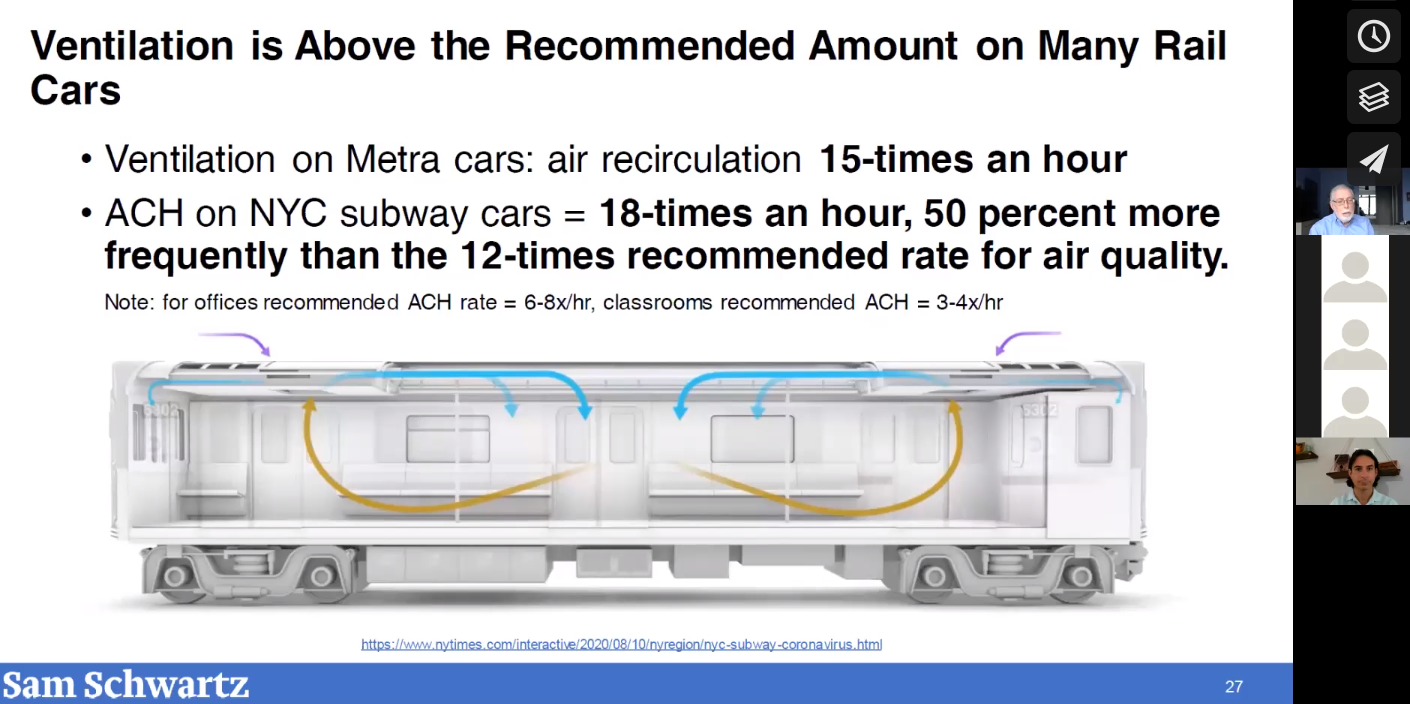Did You Know?
More information needed about airflow on Chicagoland buses and trains

In order for people to make well-informed choices about safety and transportation, it’s critical for Chicago-area transit agencies to be transparent about how air is flowing through their vehicles. This is especially important given that, according to the CDC, COVID-19 spreads both through larger droplets that fall out of the air rapidly as well as smaller droplets and particles that can remain suspended for many minutes or hours.
Providing information about air flow could help the thousands of people still riding and operating transit better understand their level of risk of contracting the virus. If the information in Chicago is as encouraging as it’s been in other cities, it could also help restore public confidence in riding transit and bring riders back to the system.
In addition to universal mask wearing, frequent air ventilation and filtration are central to preventing spread of the virus on buses and train cars. MTA in New York City and BART in the Bay Area have both released detailed analysis of how their ventilation and air filtration systems work.
For example, every 70 seconds the air in a BART train car is filtered and replaced with fresh air. On a New York City subway car, air is replaced every three minutes and 20 seconds.
For comparison, in a typical office space air is replaced every 7.5 to 10 minutes.
Air recirculates 15 times per hour — or every 4 minutes — on Metra train cars.
Recently at this year’s virtual Transport Chicago conference, Sam Schwartz, renowned transit expert, shared information on how the level of risk on transit is often misunderstood.
According to leading experts, the minimum recommended air change rate to limit spread of airborne diseases in isolated spaces like train cars and buses is 12 times per hour — or once every five minutes.
Chicagoland transit riders and operators deserve to know this information about CTA and Pace vehicles. It could help everyone better understand the level of risk on transit locally and better inform people who are considering returning to transit.
Schwartz’s firm, in partnership with American Public Transportation Association, recently released a report on global best practices regarding COVID-19 and public transit. Here are the top-level findings of the report:
- No direct correlation has been found between use of urban public transit and transmission of COVID-19.
- An analysis of public transit ridership in multiple cities shows no correlation with the rise or fall of local COVID-19 cases.
- Mask wearing has been shown to be effective at reducing person-to-person transmission.
- There are several possible explanations for the lack of correlation between public transit ridership and COVID-19 cases, compared to higher-risk settings, including limited talking by riders, high ventilation rates on transit vehicles, and the relatively short duration of most transit trips.
- It appears that what you do at the end of a trip affects the probability of contracting the virus far more than the mode of travel.
- There will be long-term health consequences if people switch in large numbers from public transit to private cars.
If you did not get a chance to participate in the Transport Chicago conference, there are many other recorded sessions that are worthy of your time!
Make a Donation
Your tax-deductible donation supports the important work that Active Trans does throughout the region
